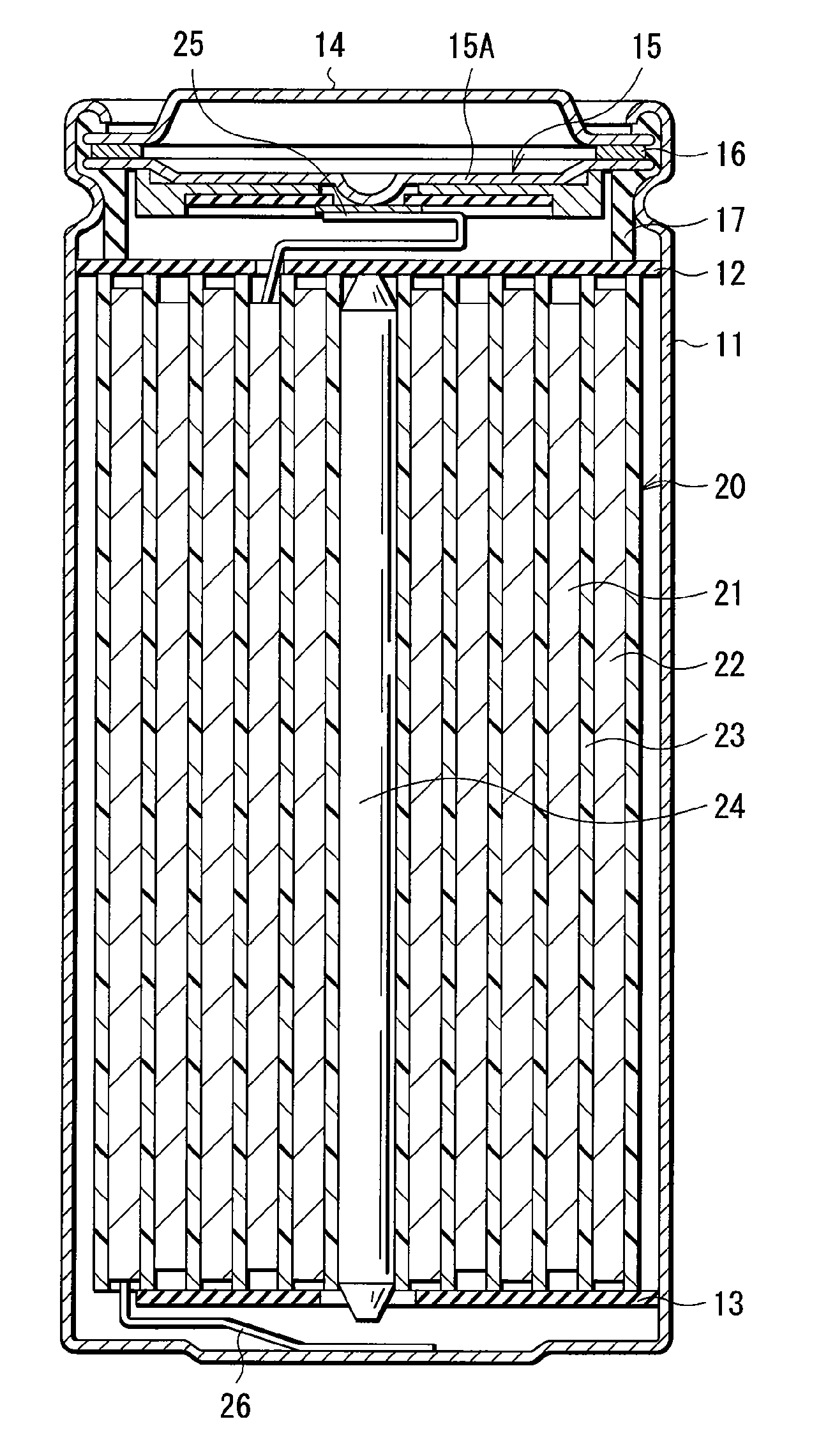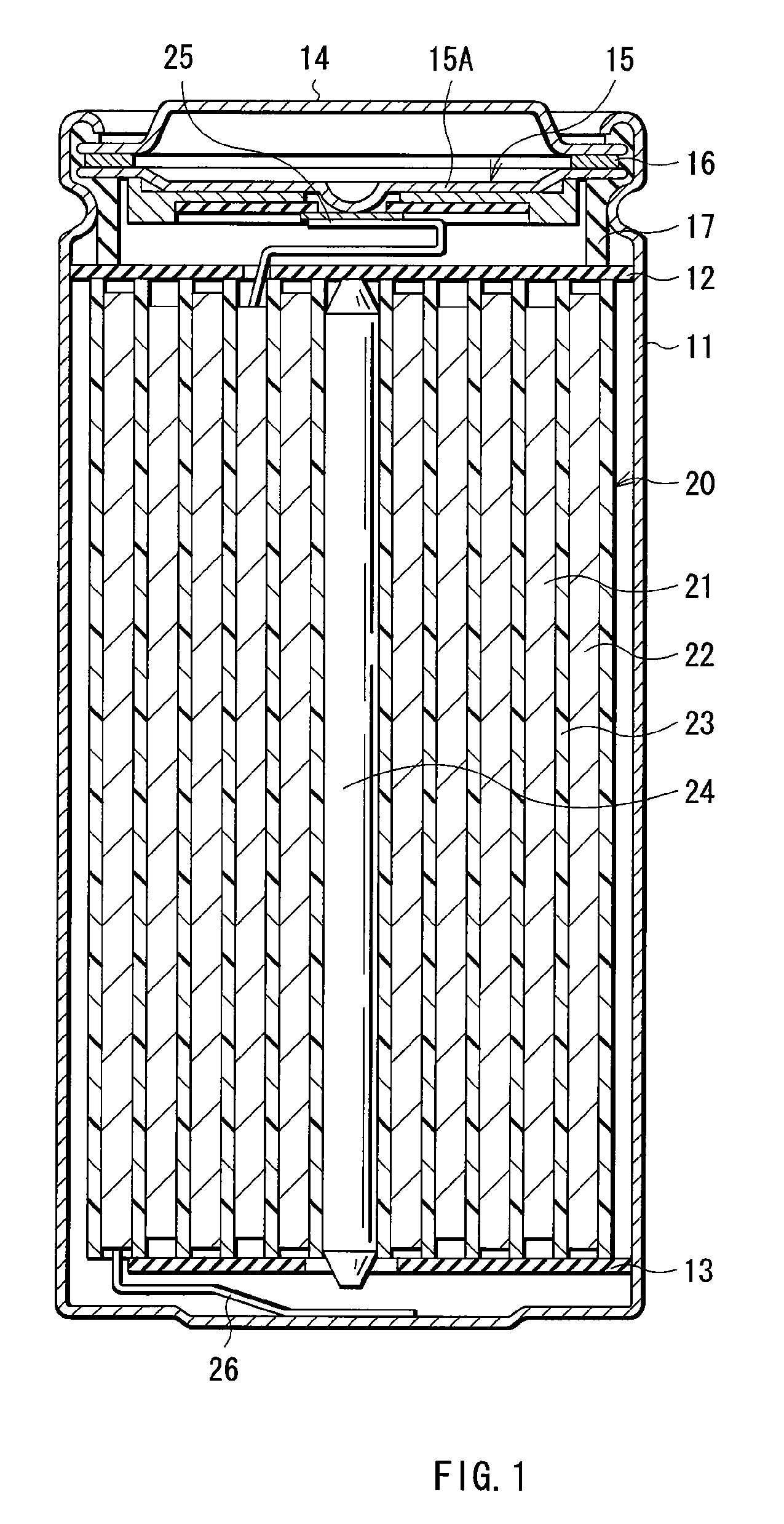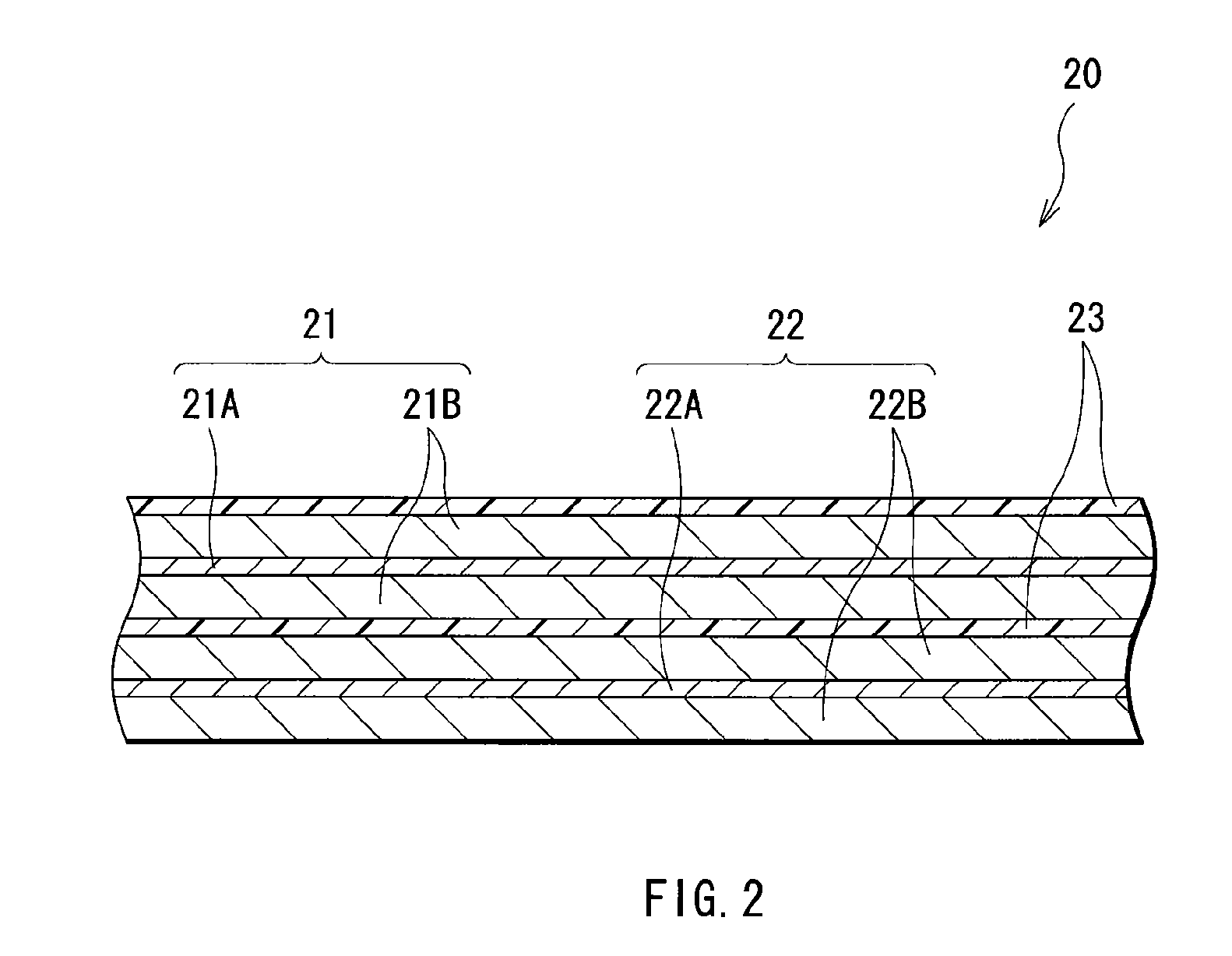Battery
a technology of batteries and ions, applied in the field of batteries, can solve the problems of lowering the characteristics of batteries, and achieve the effects of improving the chemical stability of the electrolytic solution at high temperatures, improving the high temperature stability of the coating formed on the surface of the cathode or the anode, and improving the high temperature characteristics
- Summary
- Abstract
- Description
- Claims
- Application Information
AI Technical Summary
Benefits of technology
Problems solved by technology
Method used
Image
Examples
first embodiment
[0019]FIG. 1 shows a cross sectional structure of a secondary battery according to a first embodiment of the present invention. The secondary battery is a so-called lithium ion secondary battery in which the anode capacity is expressed by the capacity component due to insertion and extraction of lithium (Li) as an electrode reactant. The secondary battery is a so-called cylinder type battery, and has a spirally wound electrode body 20 in which a pair of a strip-shaped cathode 21 and a strip-shaped anode 22 is wound with a separator 23 in between inside a battery can 11 in the shape of approximately hollow cylinder. The battery can 11 is made of, for example, iron (Fe) plated by nickel (Ni). One end of the battery can 11 is closed, and the other end of the battery can 11 is opened. An electrolytic solution is injected into the battery can 11, and impregnated in the separator 23. A pair of insulating plates 12 and 13 is respectively arranged perpendicular to the spirally wound periphe...
second embodiment
[0050] A secondary battery according to a second embodiment has a structure, action, and effects similar to of the first embodiment, except that the structure of the anode 22 is different, and can be similarly manufactured. Therefore, descriptions will be given with reference to FIG. 1 and FIG. 2 by using the same symbols for the corresponding components. Descriptions of the same components will be omitted.
[0051] The anode 22 has a structure in which the anode active material layer 22B is provided on the both faces of the anode current collector 22A similarly to of the first embodiment. The anode active material layer 22B contains an anode active material containing at least one of silicon and tin. Specifically, for example, the anode active material layer 22B contains a simple substance, an alloy, or a compound of silicon, or a simple substance, an alloy, or a compound of tin. The anode active material layer 22B may contain two or more thereof.
[0052] The anode active material lay...
third embodiment
[0054] A secondary battery according to a third embodiment is a so-called lithium metal secondary battery in which the capacity of the anode 22 is expressed by the capacity component due to precipitation and dissolution of lithium. The secondary battery has a structure similar to of the first embodiment, except that the anode active material layer 22B is made of lithium metal, and can be similarly manufactured. Therefore, descriptions will be given by using the same symbols for the corresponding components with reference to FIG. 1 and FIG. 2. Descriptions of the same components will be omitted.
[0055] That is, in the secondary battery, lithium metal is used as an anode active material, and thereby a high energy density can be obtained. The anode active material layer 22B may already exist when the battery is assembled. Otherwise, it is possible that the anode active material layer 22B does not exist when the battery is assembled, and is made of lithium metal to be precipitated when ...
PUM
| Property | Measurement | Unit |
|---|---|---|
| temperatures | aaaaa | aaaaa |
| boiling point | aaaaa | aaaaa |
| open circuit voltage | aaaaa | aaaaa |
Abstract
Description
Claims
Application Information
 Login to View More
Login to View More - R&D
- Intellectual Property
- Life Sciences
- Materials
- Tech Scout
- Unparalleled Data Quality
- Higher Quality Content
- 60% Fewer Hallucinations
Browse by: Latest US Patents, China's latest patents, Technical Efficacy Thesaurus, Application Domain, Technology Topic, Popular Technical Reports.
© 2025 PatSnap. All rights reserved.Legal|Privacy policy|Modern Slavery Act Transparency Statement|Sitemap|About US| Contact US: help@patsnap.com



